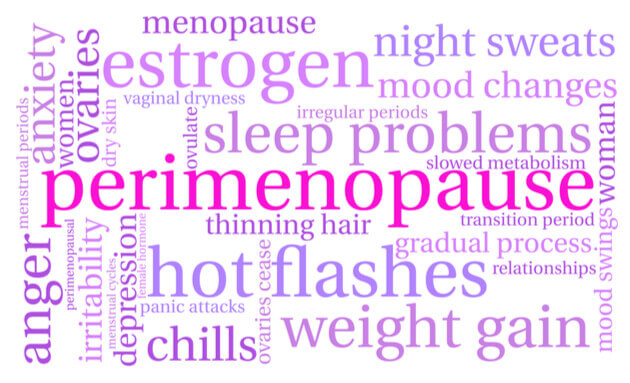
Menopause? What is it?
It's Personal
From the Greek translating to - monthly pause
Menopause naturally occurs for every woman around age 51 although some experience it earlier. It's the cessation of monthly menstruation for 12 months. This happens when your ovaries stop producing eggs and as a result levels of hormones Oestrogen and Progesterone fall. Menopause & Pilates are an excellent partnership.
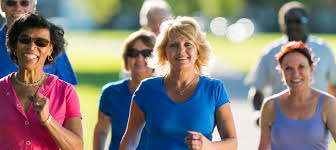
Fours Stages of Menopause
Pre-menopause: When no menopausal symptoms are noticeable
Peri-menopause: When symptoms begin to develop due to hormone changes - you still have your periods although they are changing in nature and frequency
Menopause: You've not had a period for 12 consecutive months
Post-Menopause: The rest of your life - without a period for 12 consecutive months
With life expectancy increasing into the 80's this can mean you could be post-menopausal for a third of your life! Pilates & Menopause is the answer.
The Year of Talking About Menopause
It seems 2022 was the year of talking, writing, making TV programmes, and many other public platforms about Menopause. Every day saw more articles, books, films, etc., on the topic whereas before it was mainly a handful of female writers discussing it.

Hallelujah! it's out of the closet but if you're reading any of the posts on Facebook, or looking at any Menopause support groups it looks like the consensus is - Menopause sucks big time. Symptoms from anxiety to Paranoia appear to be common.
Everyone's experience will be different and how we cope will vary too but my experience with clients going through the stage of the M word is - exercise helps.
https://www.balance-menopause.com/dr-louise-newson/
Why Pilates for Menopause?
Pilates is a system of movement that focuses on the quality of movement according to the Principles:
- Concentration
- Breathing
- Centering
- Control
- Precision
- Flow
When working with these principles in mind a Pilates class whether it's for beginners of more experienced practitioners is a calming, focused place where time spent is beneficial when Menopausal symptoms come calling.
Benefits of Pilates for Menopause
Pilates is a full mind and body programme, there are no fast-paced exercises although a free-flowing natural rhythm is encouraged. Every exercise begins with attention to the deep abdominals that stabilise the Pelvis and Spine. As movements develop to include larger muscles and limbs attention to Breath, Control, and Precision are the objectives of the class.
The result of such deliberate concentration throughout the session either on the mat or using the Professional Pilates equipment is a session that is effective without stress, a definite bonus for women going through the stages of Menopause.
https://nualacoombspilates.com/what-can-pilates-do-for-you
In Conclusion
I hope you now have a sense of the benefits a Pilates class can bring to your concerns during all phases of your Menopause journey. Whether you attend a class specifically for women dealing with this stage of life or a general Pilate class you'll find an outlet for symptoms you're experiencing as well as a place to talk should you wish to. Taking control of your situation always feels good. You don't need to be a victim of this natural although at times challenging life event.
Should you want to discuss the possibility of taking classes at my studio (not necessarily for Pilates & Menopause) in La Garde Freinet contact me at Nuala@nualacoombspilates.com
or call +33 (0) 6 73 99 37 85
Helpful links: https://www.balance-menopause.com
https://www.nia.nih.gov/health/what-menopause
Why Pilates for Osteoporosis? As we age it's increasingly important to pay attention to our lifestyle and age-related illness and disease. Osteoporosis is a significant problem for a large portion of the population. 75 million men and women age 50 and older in Europe, the USA, and Japan has osteoporosis or its precursor, osteopenia. So between news articles about calcium and vitamin D; with adverts for medication and the benefits of “weight-bearing exercise,” showing up everywhere, we're all hearing about this epidemic.
Pilates For Osteoporosis
Osteoporosis is a health condition that weakens bones making them fragile and more likely to break. Nobody seems to agree on the best path to take, the research appears contradictory. The only thing everyone agrees on is the benefit of exercise for Osteoporosis sufferers.
Not only will exercise help maintain and build strong bones, but it can also improve balance and reflexes thereby preventing falls, the most dangerous threat to those with fragile bones. According to the International Osteoporosis Foundation, 60% of those who fracture a hip still can't walk independently a year later. Clearly, the goal is to stay strong, agile, and upright.
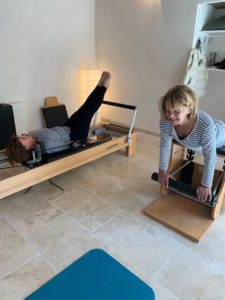
Pilates Benefits for Osteoporosis
As Pilates has gained recognition in the medical and mainstream realms as a beneficial form of exercise to address every concern from back pain to love handles, people have jumped on the bandwagon. Specifically, many have heard Pilates is a great bone-strengthening addition to a fitness regime. However, if Osteoporosis or Osteopenia is an issue, care must be taken when exercising. In particular, exercises that require flexion (forward bending) of the spine need to be avoided. This type of movement has been proved (Mayo Clinic 1984) unsafe for those suffering from the condition, increasing the potential for spinal fractures.
Why Pilates for Osteoporosis?
Alignment is a major feature in all Pilates classes. Elongating the spine, setting it up with the Pelvis, Hips, legs, feet, shoulders, and head. What better way to combat slouching than to focus on posture and spinal decompression? In addition, breathing and concentration are crucial to every exercise. When you're grounded in your mind your body will respond accordingly. With this added awareness and concentration you may be less likely to trip and fall. Attending classes in Pilates for Osteoporosis is a definite advantage.
Balance & Control
Balance and control play a large role in the Pilates repertoire. Whether you're on the mat or using Professional Pilates equipment. Pilates is a whole-body experience promoting symmetry in muscles together with good body mechanics; with continuous emphasis on deep abdominals (core) those stabilising muscles in the low back and pelvis. When these muscles are active and effective enough to support the body in movement, less effort is needed to maintain an upright posture reducing the risk of falling.
Is Pilates for Osteoporosis Safe For Sufferers?
So should you avoid Pilates if you have osteoporosis or osteopenia? Certainly not. You do however need to ensure your teacher is well trained, with experience dealing with your condition. Consider attending a class geared toward those with the condition, especially if it's a group. At the very least, avoid the rolling exercises or ones that involve bending forward or uncontrolled movement. Also, while lying on your back, keep your head on the ground, perhaps with a small towel underneath, when others are lifting their heads off the mat. A good teacher will always give this option even to those without bone density issues.
What Can you Do Safely?
On the positive side, all exercises done lying on your side or stomach, as well as on your hands and knees, are excellent. Just inform your teacher before class about your situation. Private Pilates sessions are excellent for those with osteoporosis and osteopenia for the reasons mentioned above as well as for the increase in flexibility. You just need to be aware of necessary modifications, as well as know that your teacher is knowledgeable. The benefits of Pilates are numerous when you take responsibility for your condition.
In Conclusion Pilates For Osteoporosis
Remember:
- Tell your teacher about your condition
- Choose an experienced, well-trained teacher
- Avoid Fast or aggressive exercise
- Avoid Forward Flexion (bending forward)
- Exercise laying on your back, side, or front, or hand and knees are safe
- Don't feel pressured to keep up with other members of a group
Exercise is recommended by the Osteoporosis Society - it's a proven way to maintain quality movement.
Helpful Links
https://www.osteoporosis.foundation/
For further information and help with Pilates For Osteoporosis contact me at Nuala@nualacoombspilates.com
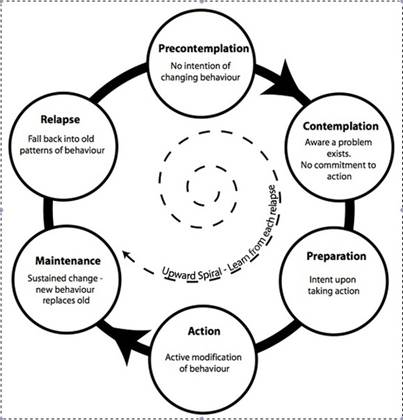
Changing our habits, whether it's about our health, our job, or simply how to make our lives less complicated, or more structured are common feelings.
Changing habits, large or small follows a distinct pattern.
Prochaska & Di Clemente
Psychologists James Prochaska and Carlo Di Clemente developed the idea of a Wheel of Change when studying how people with addictive behaviors made changes to their habits. It became clear whatever their addiction people went through similar stages to change on their own or with help.
Of course not all changes we want or need to make are life-threatening but it's interesting to explore the various stages to decide where on the wheel of change we are.
The 5 Stages
Pre-contemplation: Ignorance is bliss! you're unaware of the need to change, and you have no desire to do so.
Contemplation: You've decided you need to make some changes or friends or family have mentioned perhaps it's time. Perhaps they consider what you're doing is damaging to your health, or relationships. This stage can take a while because you're not yet fully committed to the idea (yet).
To avoid being completely blocked from moving forward, remind yourself why you want to change, and how the new habit will benefit you.
Preparation: You're thinking about it - reading books, talking to people you think may help, who already have the habit you want to develop. All this will help you decide when you'll be ready to start.
Action: Changes are developing although you need to focus. Keep reminding yourself about the positive feelings your new habit is giving you.
Maintenance: Confidence is growing in your ability to maintain the new regime, even managing to deal with small relapses. This stage can be challenging, it requires commitment. Call on your supporters.
The 6th Stage is Relapse
It's human nature. Challenges will present themselves and from time to time you may give in. But be assured once you return to your new habit it will come back faster than the first time. However, remember the 5 stages - remind yourself why you wanted to Change Habits and the benefits it brought to you.
Your ultimate goal is to make this change an automatic action, something requiring no specific thought or choice. Remember, a newly constructed wall is easily knocked down, but the longer it stands the harder it is to push over - just like your new habit. The hypnotherapist who helped me quit smoking told me this.
In Conclusion
5 Stages of Change
We've discussed Prochaska and Di Clemente's Wheel of Change - here are the main takeaways:
- Change takes time and effort
- Relapse is normal but your new habit will return fast
- Tell people about your decision to change - get support
- The longer you maintain your new habit - the harder it will be to break
- https://marcr.net/marcr-for-career-professionals/career-theory/career-theories-and-theorists/stages-of-change-model-prochaska-and-diclemente/
If you need any help with any of the above or have questions just contact me at Nuala@nualacoombspilates.com
Moving To Change?
If you're contemplating starting Pilates this might help - https://nualacoombspilates.com/5-reasons-to-do-pilates
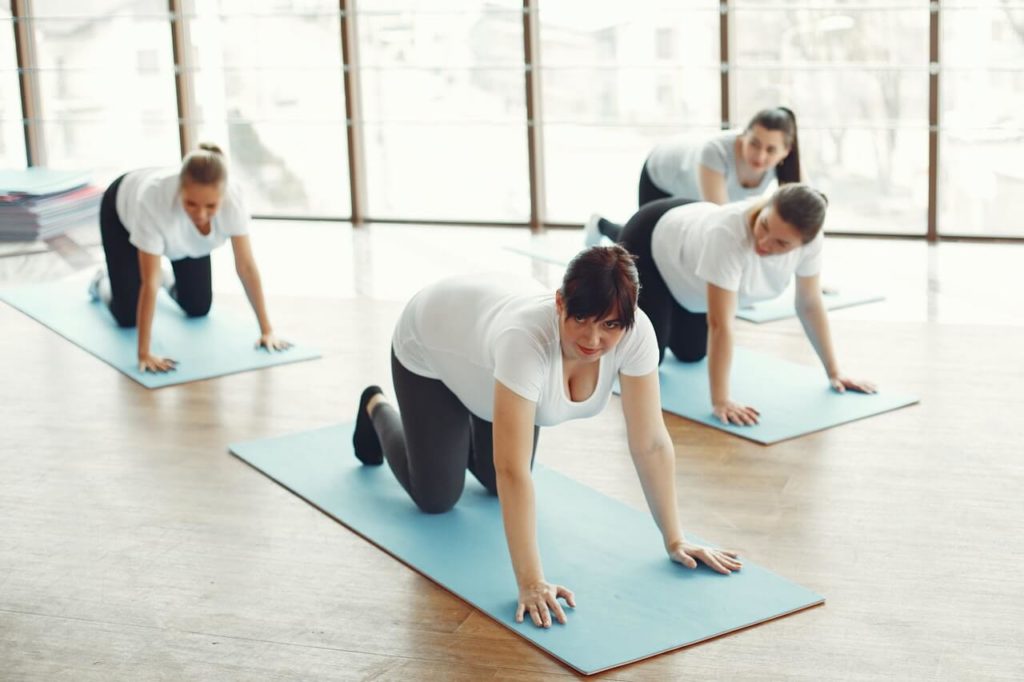
So you've heard about Pilates, or you've seen posters, you might have passed by my studio in La Grade Freinet or other studios where you live and wondered what it's about and if the hype is true. You wonder "What are the benefits of Pilates for you"?
I've been a student, teacher, and teacher trainer of Pilates for many years. I can say it's a system of exercise I've never become bored with. I'm not surprised when clients or student teachers realise how great it is.
NEW TO PILATES?
What Will It Do for You?
Whether you're new to Pilates and exercise in general or are a regular exerciser the benefits of Pilates are clear for everyone. There are 6 Pilates Principles although some schools mention 8 or 7 - Joseph Pilates, the creator of the technique didn't set down these principles but teachers who continued with his system thought a set of defining formulas would be helpful.
PILATES PRINCIPLES
Concentration: A fundamental principle - Pilates is a mind and body programme. When you work with concentrated effort, the effects are noticeable.
Centering: Pilates uses the deep abdominals - and those abdominals stabilise the body, once they're active the more superficial muscles can move the body safely.
Control: When Joseph Pilates developed his technique he called it Contrology. The aim of the technique is to work in such a way as to reduce the risk of injury from uncontrolled, sloppy movements. The exercises are not performed super slow, but from the inside out consistently and with quality.
Breathing: A full breath is recommended during all Pilates exercises to keep you alert but also to help with coordination, timing, and rhythm.
Flowing Movement: The aim of a well-organised Pilates class is to create a smooth, fluid transition between movements creating a sense of well-being and a stress-free workout.
CONSISTENCY IS KEY
Taking into account the Principles it's easy to see what Pilates can do for you - how regular Pilates classes can help to ease stress, strengthen, tone, mobilise and improve flexibility. All these qualities will improve your sports and reduce any potential for over-use injuries. Consider how many times you serve during a game of tennis or swing the golf club around 18 holes.
WHAT CAN PILATES DO FOR YOU?
Clients of all ages tell me how well they feel after a class using both the mat work system and the professional equipment. They tell me:
- How their sleep has improved
- How previously stiff joints are more mobile
- How their balance is better
- How their game of golf or tennis no longer ends with back pain
- How their posture has improved
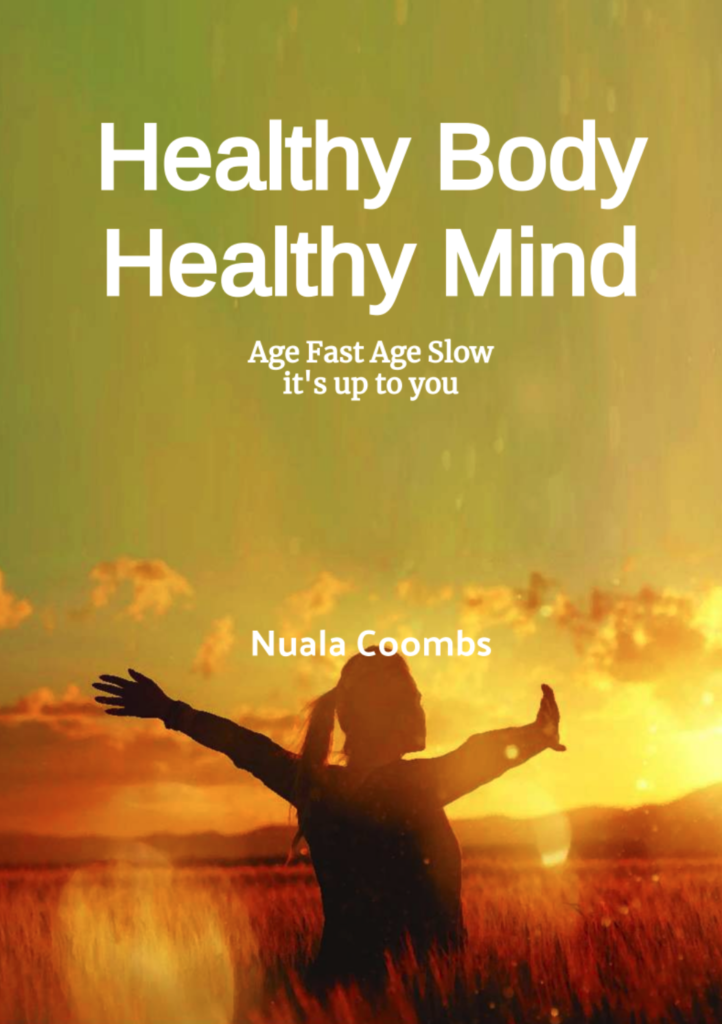
PILATES IS NOT THE CIRCUS!
Don't be mis-lead by those acrobatic photos you've seen in magazines or on Youtube. Pilates is for everyone whatever their fitness level. Exercises can be changed to help with any issues. They can also be very athletic for those who want to improve their fitness level.
Pilates is not "a good stretch" it is a full-body technique to help you achieve whatever health and fitness goal you want.
So next time you pass that Pilates studio or class, pop your head in - get some more information.
As usual, if you need more information or have questions contact me at Nuala@nualacoombspilates.com
In Conclusion
What Can Pilates Do For You
The Benefits of Pilates
We've looked at the benefits of regular Pilates sessions. I hope you can start to think about trying it out - if you're not already a client. Remember What Pilates Can Do For You
- Pilates is a mind and body exercise programme
- Pilates is performed with control
- Pilates is for everybody - beginners and experienced exercisers
https://www.nualacoombspilates.com/5 Reasons to Do Pilates
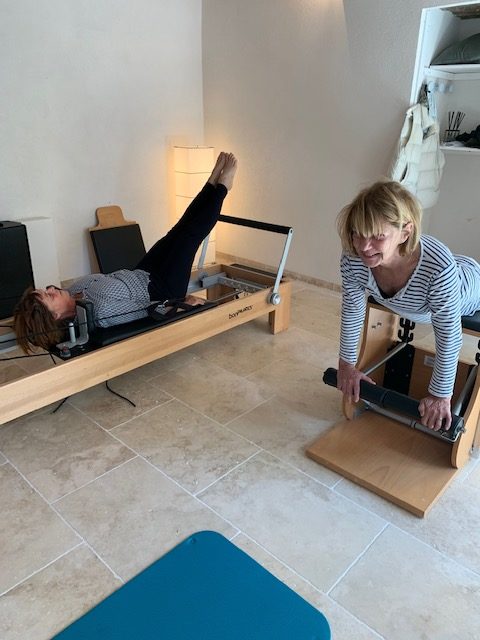
QUESTIONS?
If you have questions just visit my studio at Place de Vielle, La Garde Freinet 83680 or email: Nuala@nualacoombspilates.com or you can always phone - +33 (0)6 73 99 37 85
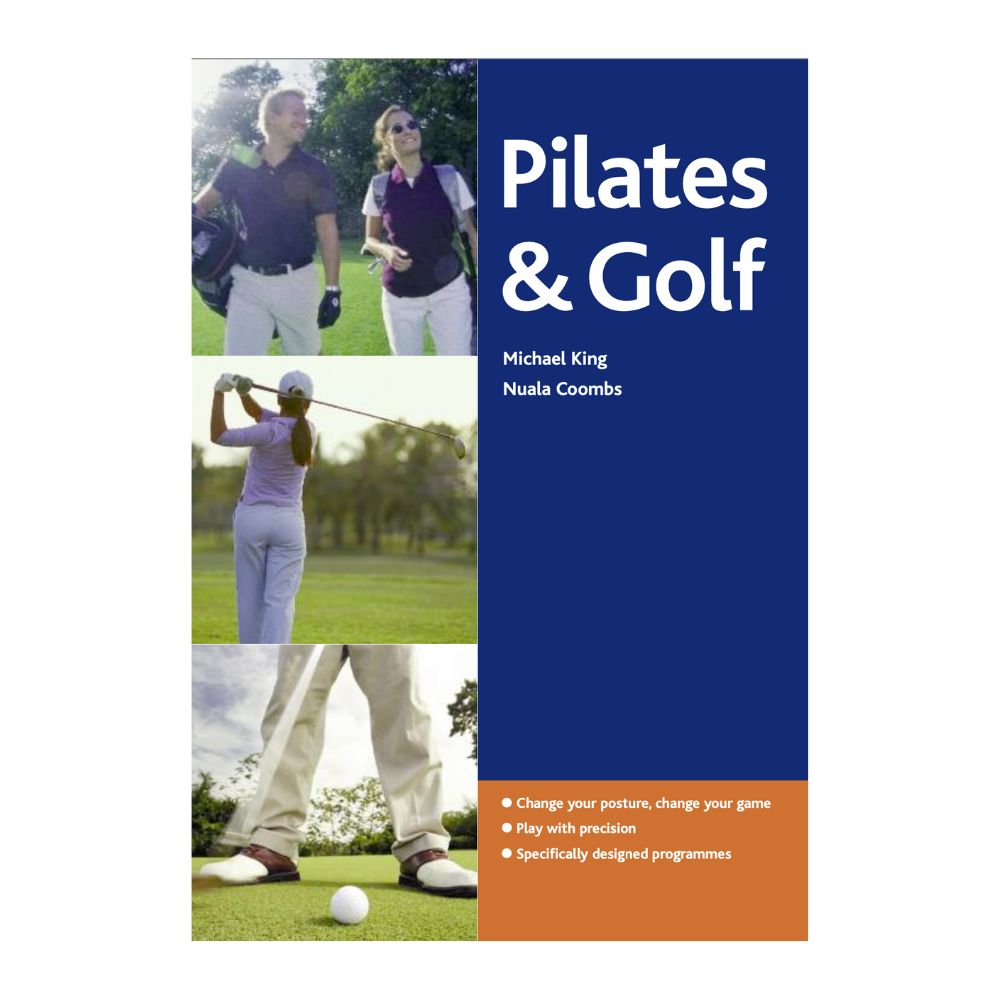
Why Pilates For Golfers?
Golf is a mind & body sport. Concentration, strength, flexibility, mobility, and power are all essential components. The stress on the spine and supporting structure are huge. When the body is out of balance the risk of injury intensifies. Pilates for Golfers is the answer.
The Mechanics of Your Golf Swing
During your golf swing your body acts like a whip. Power production begins at the feet, pushing against the ground, it travels up the legs to drive the hips forward. Force is transferred through the trunk to the chest upper back and arms. If any part of the chain is weak or stiff power is lost. Your body will have to compensate along the links of the chain, resulting not only in loss of power but increasing injury risk. Pilates for Golfers will improve any imbalance.
Proper Sequencing - Your Golf Swing:
Your golf swing demands a strong, flexible, coordinated and balanced body. It's a physically demanding full-body sport. With specific training, injuries will be avoided and improvements made to the quality of your performance. Even if you hire a professional golf coach to work on your technique, if your body is not capable of performing the drills because of stiffness, lack of core strength, or mobility problems progress will be slow, at worse may never happen.
To obtain proper sequencing of the Swing Action you will need:
Strong leg, thigh, and hip muscles to generate driving power:
These lower body forces must be transferred through a well-conditioned mid-section to the upper body
Strong chest, back, and shoulder muscles:
Allow for a greater acceleration of the club whilst maintaining control through effective arms and forearms
It's clear, a perfectly executed golf swing needs overall body strength, flexibility, and coordination.
Pilates for Golfers uses Pilates Principles to help achieve your Golfing goals
Concentration, the ability to focus throughout the swing improves skill and power
Centering, efficient use of core muscles to stabilise hips and shoulders improves power through the hips to increase the length of Tee and Fairway shots.
Precision, the repetitive nature of golf demands consistency, working with this Pilates Principle in mind consistent quality performance will be developed.
Flowing Movement will help you to "feel" the swing as opposed to just hitting the ball
Breath, in addition to keeping you fresh and alert throughout your game, learning to use a full breath will increase the power and endurance of a shot. It will also help to create a smooth swing.
Routine, if you can replicate an effective swing pattern, consistency, and accuracy, the key to a great game of golf will be yours. The Pilates system of exercise is designed to help you work with focus when performing each movement every time eventually resulting in body awareness becoming automatic.
Studio Pilates La Garde Freinet
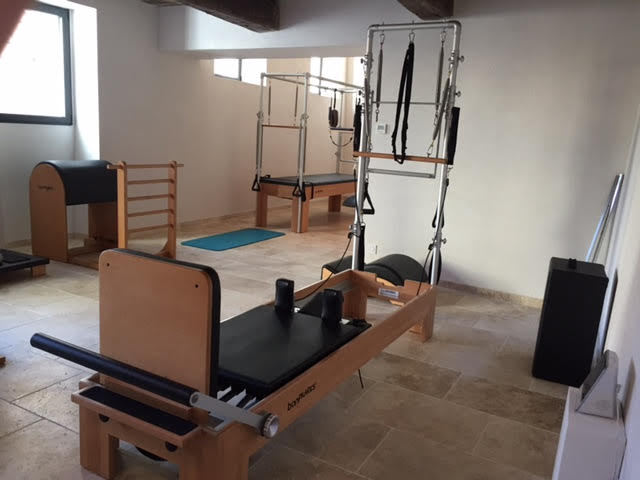
Pilates Programming: when you decide to add Pilates to your golf practice, here at the Studio in La Garde Freinet ( just opposite Bar du Soleil) you'll work with both the professional Pilates equipment as well as floor exercises, the combination of the two systems offer a complete workout whether you're new to exercise or a regular fitness practitioner.
https://www.nualacoombspilates.com/5 Reasons to Do Pilates
In Conclusion
Pilates for golfers
To develop your best Golf Swing sequence you need to:
- Improve your overall posture
- Develop an efficient core
- Strengthen your upper and lower body
- Work on improved mobility and flexibility
- Breathe through the sequence
Contact me should you have questions or need an appointment I am here all year.
Tel: 06 73 99 37 85 email: Nuala@nualacoombspilates.com
Happy Golfing.......
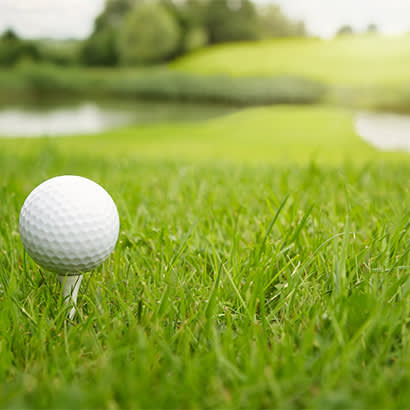
Is It Safe?
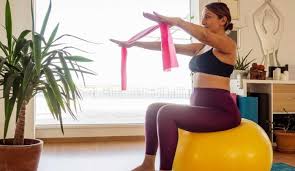
It's an important question. Is Pilates For Pregnancy Safe? It's been proven, ladies who exercise during pregnancy are more likely to have a calmer delivery. Pilates during pregnancy is the perfect low-impact exercise programme.
What are the Benefits of Pilates For Pregnancy?
Pilates targets the areas most affected during pregnancy - posture, back pain & balance. The fundamental benefit of a Pilates For Pregnancy programme is these areas. With the controlled movements using a full breath, the system not only strengthens but helps to mobilise and stabilize.
Exercise Considerations
https://www.babycenter.com/pregnancy/your-body/carpal-tunnel-during-pregnancy_234
- After the 20th week, it's recommended (ACOG) no exercise on the back (supine). This position may reduce the blood flow to the baby and potentially cause Oxygen deprivation (Hypoxy). The answer to this is to have the Mother's head higher than her heart - lifting her upper back and head will help.
- Side lying, standing, or kneeling are all appropriate throughout the period. It's possible during the 2nd or 3rd Trimester putting pressure on the wrists may cause discomfort due to water retention or Carpal Tunnel Syndrome.

The American College of Obstetricians & Gynecologists have a detailed website covering all aspects of Pregnancy.
Second Trimester
- From the Second Trimester exercises requiring forward flexion (bending forward) and those using the main abdominal muscle (Rectus Abdominis) should be avoided. The tissue running from the breast bone to the pubic bone (Linea Alba) needs to open to accommodate the growing baby.
- Keeping this opening to the minimum is essential for the best recovery after delivery. So Aggressive abdominal exercises like crunches or head lifting should be avoided. The Pilates Method promotes connection to the deep abdominals throughout the performance of each movement, developing stabilisation of the Pelvis. This is necessarily performed with controlled movement.
Hormone Relaxin
- During Pregnancy, the body produces the hormone Relaxin. Relaxin affects all ligaments in the body to accommodate the developing fetus and prepare for birth. Relaxin peaks during the first trimester. Because of relaxed ligaments. exaggerated stretching must be avoided. Stretching to the natural length of a muscle is fine but no forced stretching should be practiced.
Yes to Exercise
Exercising during pregnancy has many benefits, not least the "me" time for the Mother as well as the improved sense of well-being. The effect on posture cannot be overestimated. As the pregnancy develops there's a potential for the pelvis to tilt forward. Left unchecked this can cause compression in the low back resulting in pain. Regular Pilates For Pregnancy classes during pregnancy will help strengthen postural muscles particularly the abdominals to avoid excessive forward tilting.
So the answer is a big YES to using Pilates When Pregnant with modifications as it progresses. I've had clients attend classes up until their delivery dates.
When Baby Is Here
- Returning to Pilates when the baby has arrived needs consideration whether or not the birth was natural. When the doctors give the all-clear a gradual return to pre-pregnancy exercise levels is recommended. Extra attention should be paid to maintaining a connection to the deep abdominals to avoid delay in healing the separation in the Linea Alba and a return to the best posture.
In Conclusion
Pilates For Pregnancy
- Yes it's safe during a healthy pregnancy to exercise
- Follow the modifications given by the instructor
- Stay hydrated throughout - don't wait until you feel thirsty
- Listen to your body and follow your instinct - if an exercise causes concern stop and ask for guidance
If you have any particular questions regarding Pilates and Pregnancy as a client or Teacher, just ask - Nuala@nualacoombspilates.com
Why Pilates?

You may have been thinking about doing Pilates but you're not sure about the benefits. After all it's more expensive than most exercise classes available to you. Here are REASONS TO DO PILATES to help you make a good decision:
Improve Your Game
Whether that's Golf, Football, Tennis or any sport you enjoy. When your back doesn't hurt after a round of golf. When you don't need pain killers because of your big serve when you play Tennis. Good Reasons To Do Pilates. You'll learn how to engage and control your deep abdominal muscles to support your low back.
Move More Easily
We need to be able to move with ease and with quick reactions when necessary. Keeping our ability to enjoy our sports for as long as we want. As we age to be able get out of a chair smoothly or take a walk without pain. Regular Pilates practice will allow you to keep your mobility and independence. A Great Reason To Do Pilates. https://nualacoombspilates.com/pilates/age-fast-age-slow
Quality Breathing
When your ability to take a deep breath is difficult it can affect many areas of life. Young or older the importance of breathing easily and effortlessly all the time is the basis of health. Pilates teaches a full breathing pattern throughout the class. Having this ability will allow you to take it into your daily life. You'll see improvement in your energy, you'll concentrate better and sleep will improve. Just a few Reasons To Do Pilates.
No special Kit Needed
Unlike most exercise programmes you don't need any special kit. No particular shoes are needed. Classes are bare-foot or with socks as Pilates is low impact. You just need to wear clothes that allow you to move freely without restrictions.
Everyone Is Welcome
There's no age limit for Pilates everyone is welcome. If you have particular health issues a professional Pilates teacher will be able to adapt the exercises for you. Age is no barrier either from young to not so young the exercises can be changed to help everyone get the full benefit.
https://www.nualacoombspilates.com/healthy ageing
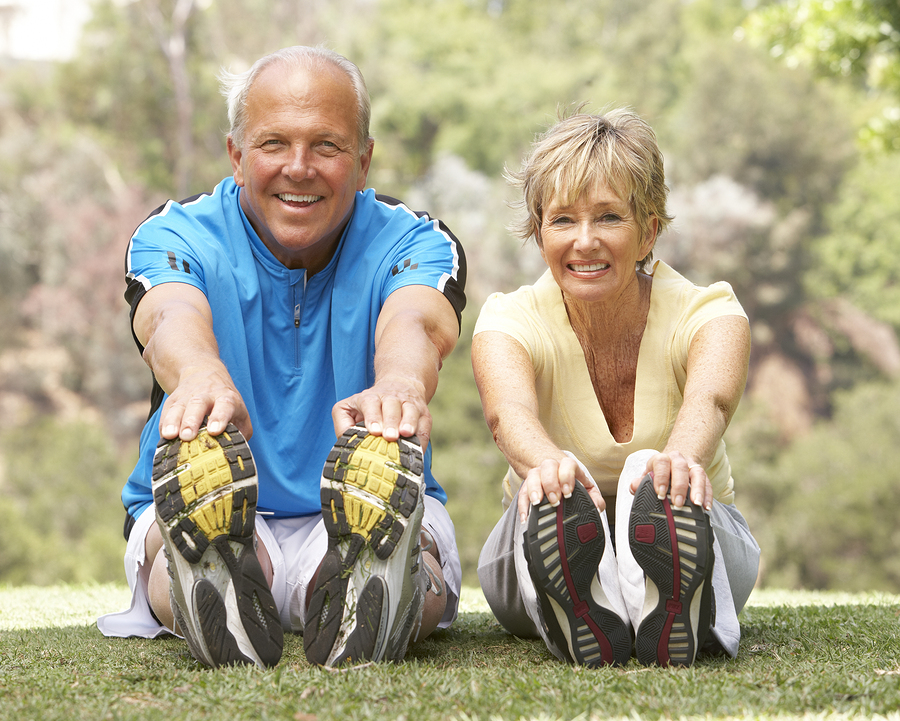
So there you have it - there are many more REASONS TO DO PILATES these are just a handful to set you thinking.
Any Questions just email - Nuala@nualacoombspilates.com I'm here to help.
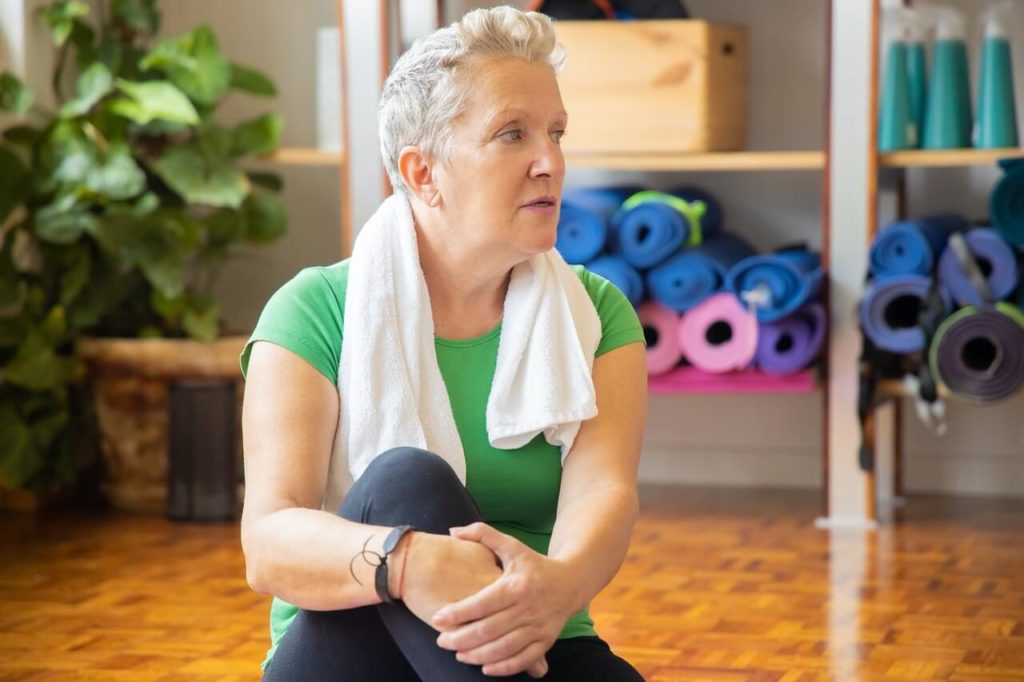
Healthy Ageing - it's up to you
It comes to us all - each year as we celebrate our birthday we start to notice changes occurring. It could be our first grey hair letting us know something is going on. Healthy Ageing is in our hands. Assuming we have no underlying health issues, our attitude, mindset, diet, exercise regime and sleep pattern all play a significant part in our process.
You may accept you're older but don't consider yourself old. You find some things not so easy as they used to be but, don't fall into the trap of thinking it's because of your age - growing older doesn't mean you're going to lose your independence or become less mobile. That stiffness you feel bending down to pick something up, or getting out of a chair may have more to do with you being less active than a direct result of your age. Make Healthy Ageing your priority.
LOWERING EXPECTATIONS
As we age it's easy to lower expectations regarding movement and exercise, becoming more sedentary due to health reasons, pain or just feeling age and slowing down are the natural way of things. I'm here to tell you it's never too late to start moving. The saying "use it or lose it" springs to mind.https://nualacoombspilates.com/pilates/age-fast-age-slow
HEALTHY BODY HEALTHY MIND
My book with the same name will help you understand what's going on in our body as we age - with some good information you can stay healthy, vibrant, productive, active and energised. it's your choice.
It's available from Amazon in Kindle format and paperback - https://amzn.eu/d/ebfaLeF
In Conclusion
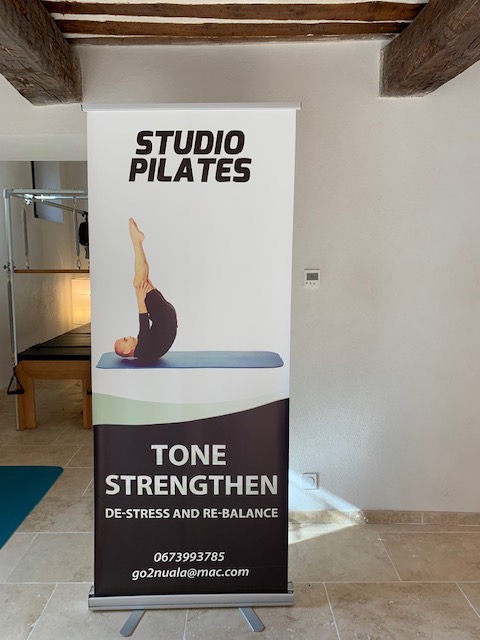
IT'S NEVER TOO LATE
Healthy Ageing means you know you can choose to do whatever you want - start a healthy lifestyle, run that marathon, or start a business - as long as you're healthy, life has no bounds. I didn't open my Pilates studio in La Garde Freinet until I was 62. Of course I wasn't new to business, but I didn't give my age consideration when I decided the village needed a Pilates studio and I was proved right.
History
Parkinson’s Disease is referred to in the ancient Indian medical system Ayurveda in the name Kampavata. It’s also mentioned in the oldest Chinese medical texts as well as those of the ancient Greeks, Romans and the Old and New Testaments. So it’s clear the disease has been with us for many years. It's now considered the fastest growing neurological disease. Pilates for Parkinson's Disease time has come.
However it was not until 1817 a detailed medical essay was published on the subject by a London Doctor James Parkinson. His intention was to encourage study of the condition to help those with what he termed the “Shaking Palsy”. Sixty years after the publication a French neurologist named Jean Martin Charcot truly recognised the importance of Parkinson’s work and named the disease after him. https://www.apdaparkinson.org/wp-content/uploads/2021/04/Who-was-James-Parkinson.pdf
What Is Parkinson’s Disease?
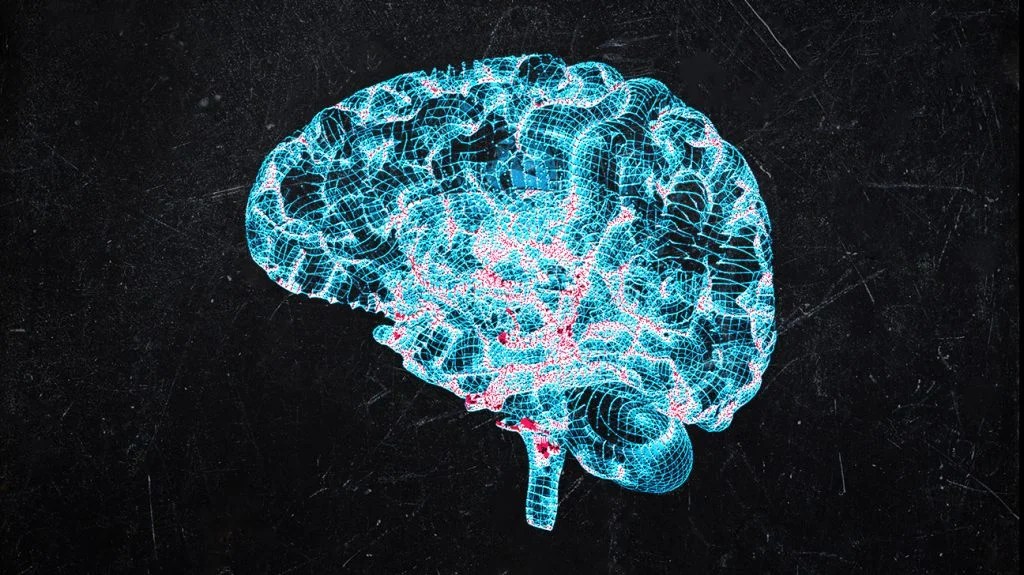
Parkinson’s is a progressive neurological condition. Simply put, it causes problems in the brain that get worse over time. People with Parkinson’s have depleted levels of the hormone Dopamine. It’s not clearly understood why this occurs, but researchers think it’s a combination of genetic and environmental factors causing Dopamine producing cells to die.
Dopamine is a chemical messenger transmitting signals to the part of the brain that controls coordinated movement. When these cells die other movement control centres become affected. It’s this disturbance that causes the symptoms of Parkinson’s Disease. Pilates for Parkinson's Disease can help delay some of the symptoms of Parkinson's from progressing as fast as they might.
Symptoms
Initially, symptoms will be mild, progressing over time. Common Symptoms:
- Tremor in a resting limb
Slowness of movement
Rigidity
Poor balance and coordination
Small handwriting
Shuffling walk
Stiff facial muscles
Muffled Speech
Depression
Taking part in Pilates For Parkinson's classes can help alleviate some of these.
There can also be various other physical, cognitive and psychiatric symptoms ranging from constipation to anxiety.
Treatment
There's no one size fits all medication -each patient is different - there symptoms can vary drastically. Drugs may target Motor symptoms as well as non-Motor symptoms. Medications dealingl with Motor symptoms target tremor, stiffness and slowness while the non-Motor drugs deal with depression, sleep disturbance and anxiety.
There's the possibility of surgery for those whose symptoms are not responding to medication - Deep Brain Stimulation can relieve symptoms. There's also the option for Stem Cell treatment.
Although currently no cure is available, research is moving forward and medications, treatments both physical and psychological are making progress. https://www.healthline.com/health/parkinsons/stem-cell-therapy-for-parkinsons#about-stem-cell-therapy
Pilates & Parkinson's
Exercise is accepted to be essential for those suffering the affects of Parkinson’s Disease. Although at present all treatments and therapies can only slow the progression of the symptoms, it’s clear the mind and body connection of Pilates can offer a positive, proactive environment for those affected.
BENEFITS
A Pilates programme offers Spinal mobility, Extension, Flexion, Lateral Flexion and Rotation, at the same time Stabilisation of the upper and lower body to help with balance and coordination. Hip mobility, Rotation, Adduction and Abduction relative to gait. https://nualacoombspilates.com/pilates-benefits-for-you
Professional Equipment
In addition, particularly in a one to one setting the Pilates teacher can offer a calm, safe place for the client to experiment with ranges of motion using the professional Pilates equipment to assist and create support as well as challenge.
The improved strength, mobility, flexibility, coordination and balance will create a confidence in the client that may have been diminishing as the symptoms become more noticeable.
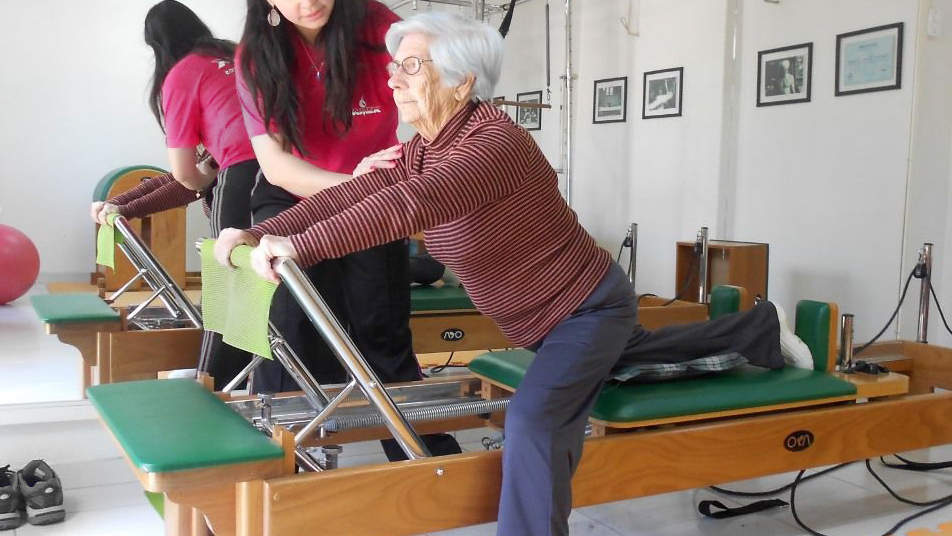
Client's Responsibility
Benefits from a Pilates programme will only become apparent when the client understands the necessity to practice daily, putting the knowledge they're acquiring about their personal physicality, limitations and development to use in their daily activities. Once or twice a-week visit to the Pilates studio will not be enough to ensure lasting results.
Teacher's Responsibility
The Pilates teacher needs to be of the highest professional standard to help this client. A teacher who can recognise the changes occurring as well as how each visit can present a different challenge both to them and their client, whether that’s physical or emotional.

In Conclusion
Without a doubt Pilates is an intelligent choice for those dealing with Parkinson’s disease, in combination with their physician, neurologist, physiotherapist or osteopath, the Pilates teacher is an integral part of the team.
More Information
If you need more information click think link: https://www.michaeljfox.org/